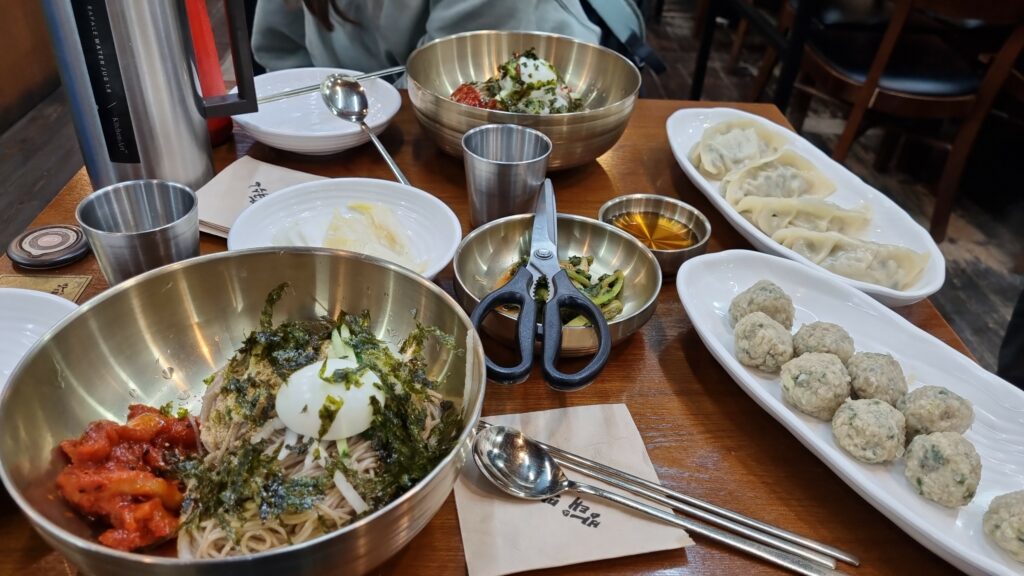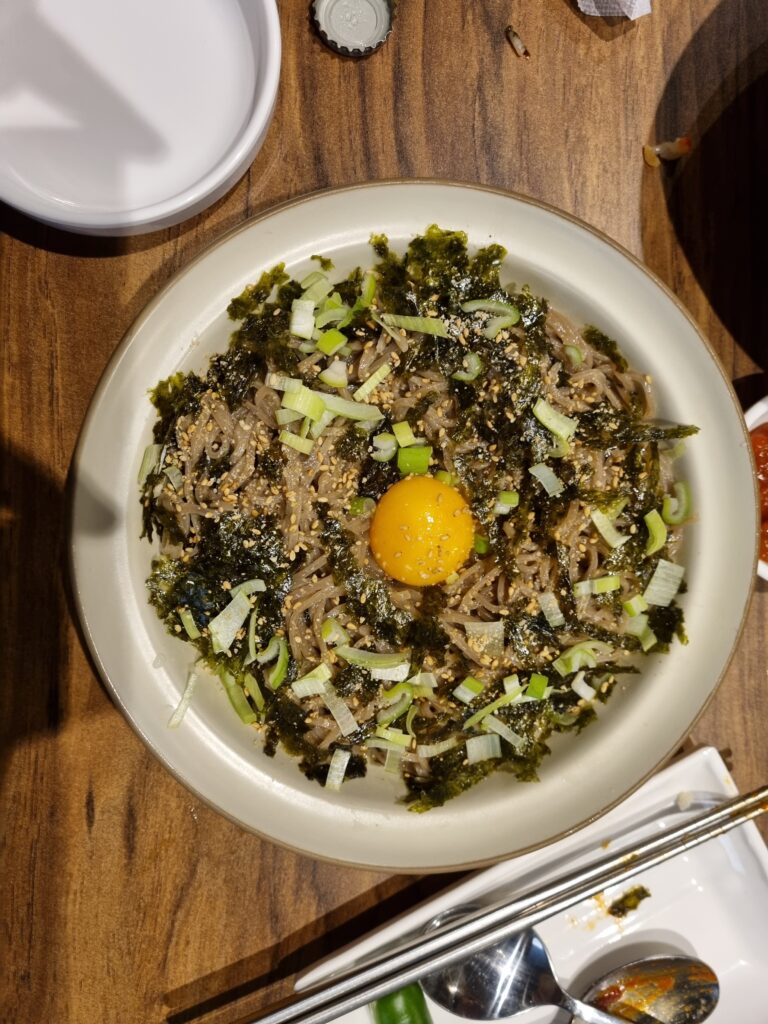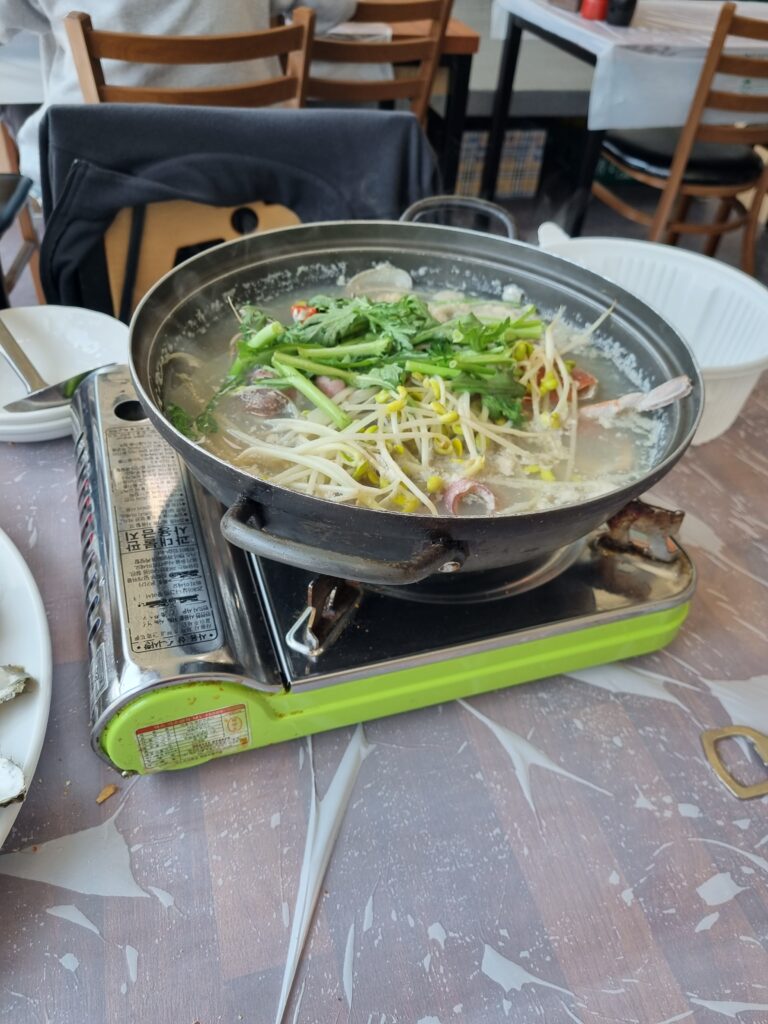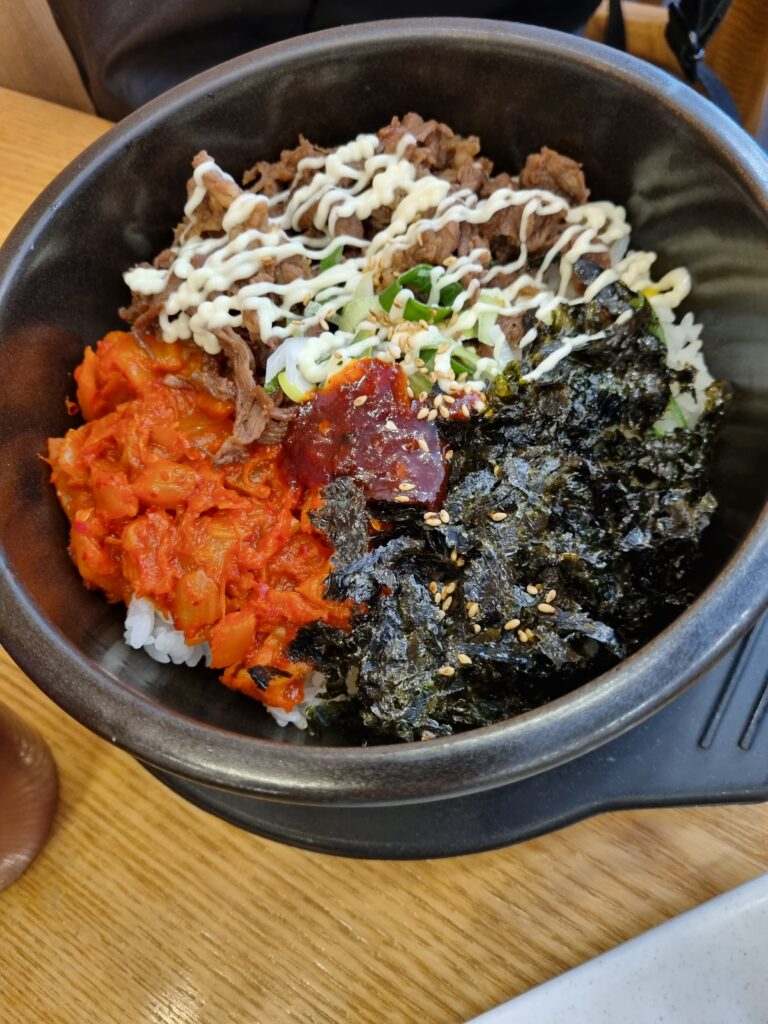Nestled at the far eastern edge of the Asian continent, South Korea beckons with an enchanting fusion of tradition and modernity. Recent global triumphs in cinema, exemplified by the Oscar-winning “Parasite” and the hit series “Squid Game“, have captivated Western audiences and deepened the allure of this extraordinary nation. The cultural fascination, however, began to take root earlier with the infectious rhythms of PSY’s “Gangnam Style“.
What becomes evident quite early when spending time in South Korea are the remarkable differences from our Southern European society.
In particular, the extraordinary kindness of Korean citizens stands out, often willing to accompany you to your destination simply because you asked for directions. Not to mention the feeling of safety, as petty crime appears to be virtually nonexistent. You can comfortably leave your phones and laptops on café tables while heading to the restroom; nothing will be stolen. The widespread sense of cleanliness is striking, with perfectly maintained public restrooms found everywhere in the cities. Lastly, the vertical development of the cities characterizes an urban landscape composed of thousands of skyscrapers. These are so abundant that many of them house shopping centers, cinemas, restaurants, arcades, and other attractions, not just offices and residences as you might find in Italy.
In other words, it’s a country worth exploring to broaden your mental horizons and discover new perspectives on the world.
Seoul
As the capital of South Korea, Seoul stands as the nation’s bustling epicenter. With a population of over 9 million residents, it ranks among the world’s largest metropolises. After centuries of domination and wars against neighboring giants, particularly Japan, China, and North Korea, Seoul has, in the past two decades, driven unprecedented growth in the country. This has ultimately propelled South Korea to the forefront as one of the most advanced nations globally, in terms of freedom, economy, and widespread prosperity. Abounding in historical landmarks, temples, and remarkable skyscrapers, Seoul is a vibrant city that offers visitors an abundance of beauty to explore.
The Seoul Tower
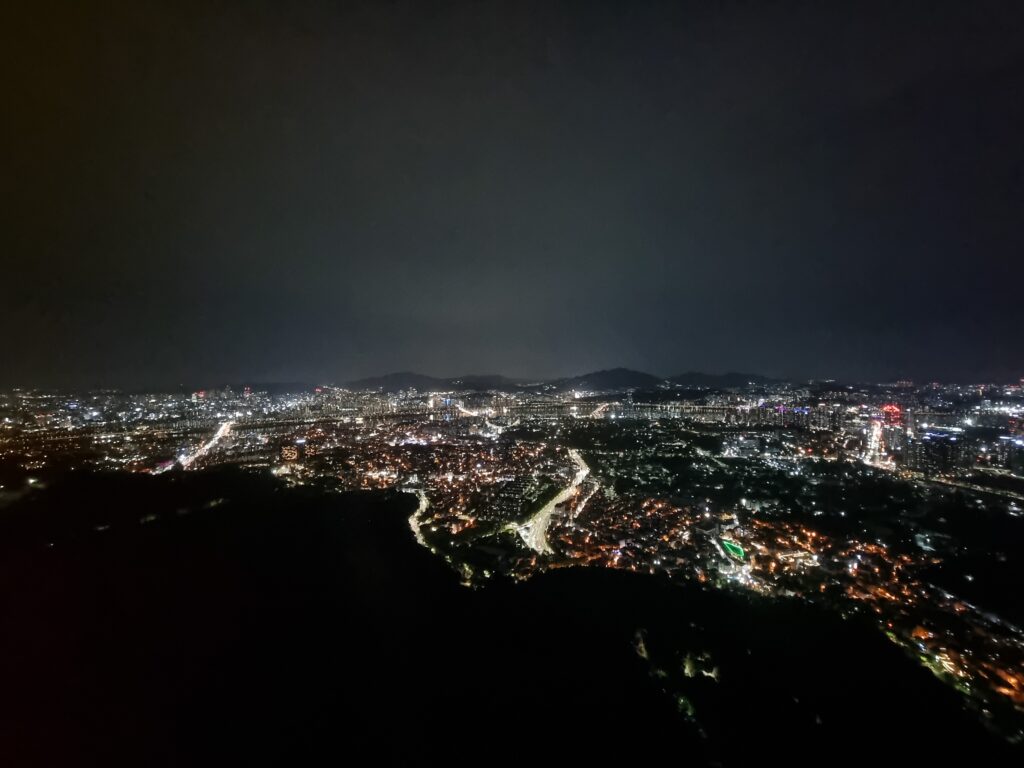
Seoul Tower is an iconic symbol of the South Korean capital’s skyline. Perched atop Namsan Mountain, this sparkling landmark offers panoramic views of Seoul. Visitors can ascend the tower via a scenic cable car ride or, even better, through a leisurely stroll through Namsan Park.
Once at the top, you can access the observation deck, where you can enjoy a breathtaking cityscape. Especially in the evening or at night, the spectacle is guaranteed. Around the tower, you’ll find quaint restaurants, bars, and a few stands where you can sample some delicious treats.
The Gyeongbokgung
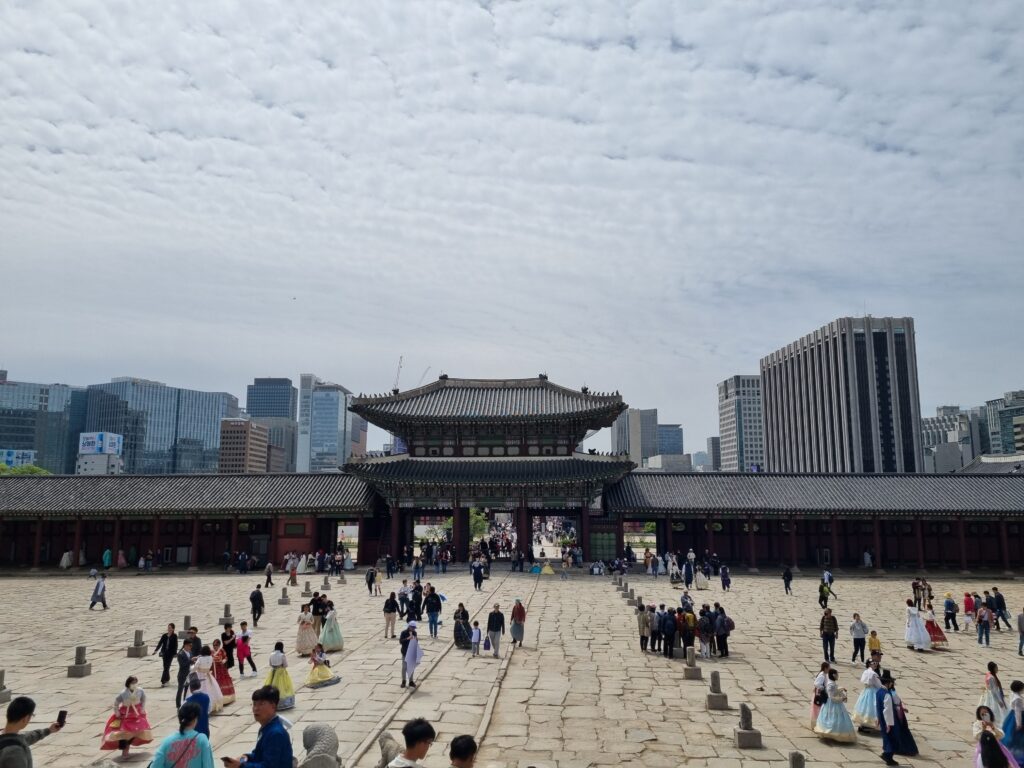
Gyeongbokgung, the illustrious “Palace of Shining Happiness,” is an enchanting testament to South Korea’s royal heritage. Located in the heart of Seoul, this grand palace complex serves as a captivating window into the nation’s rich history. Built in 1395 during the Joseon Dynasty, Gyeongbokgung is a masterpiece of Korean architecture, boasting ornate gates, splendid pavilions, and meticulously landscaped gardens. Its centerpiece, Geunjeongjeon Hall, is a symbol of royal authority, and the changing of the guard ceremony, held at the main gate, is a spectacle not to be missed. Strolling through the palace grounds, visitors can immerse themselves in the serenity of the past while marveling at the juxtaposition of tradition and modernity, as skyscrapers rise in the distance.
A unique feature of this place is the opportunity to rent a traditional Korean outfit for the entire day to wear while exploring the city. While this tourist concept may seem peculiar to Westerners, it is actually very popular and quite common to encounter groups of tourists or couples strolling around the palaces dressed in these garments.
Changdeokgung Palace
Located not far from Gyeongbokgung, Changdeokgung Palace is a gem of Korean architecture and history. Built during the Joseon Dynasty in the 15th century, it boasts a harmonious blend of stunning natural surroundings and meticulously designed structures.
What sets Changdeokgung apart is its meticulous adherence to feng shui principles and its “biwon,” or secret garden, which is a serene oasis of ponds, pavilions, and lush vegetation. The palace itself showcases the architectural elegance of the era, with ornate halls and tranquil courtyards. It’s no wonder that Changdeokgung is a UNESCO World Heritage site, as it offers visitors a fascinating journey into Korea’s royal heritage and the opportunity to connect with the country’s rich cultural legacy.
Insadong District
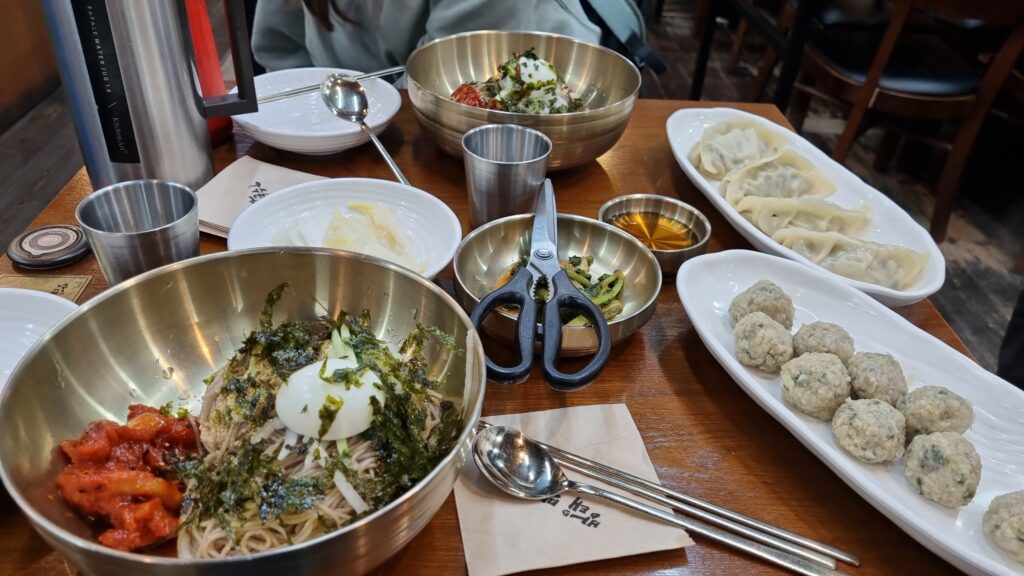
The Insadong District, nestled in the vibrant heart of Seoul, is a lively cultural enclave that offers a delightful blend of tradition and contemporary style. This charming neighborhood is renowned for its narrow lanes adorned with picturesque tea houses, artisan shops, and galleries that showcase South Korea’s artistic heritage. Here, you can immerse yourself in the world of traditional Korean craftsmanship, from intricate ceramics to delicate hanbok attire. Insadong is also home to numerous restaurants serving up authentic Korean cuisine, making it a haven for food enthusiasts. You’ll also come across various stands offering the traditional caramel candies made famous by the TV series Squid Game.
The Gwangjang Market
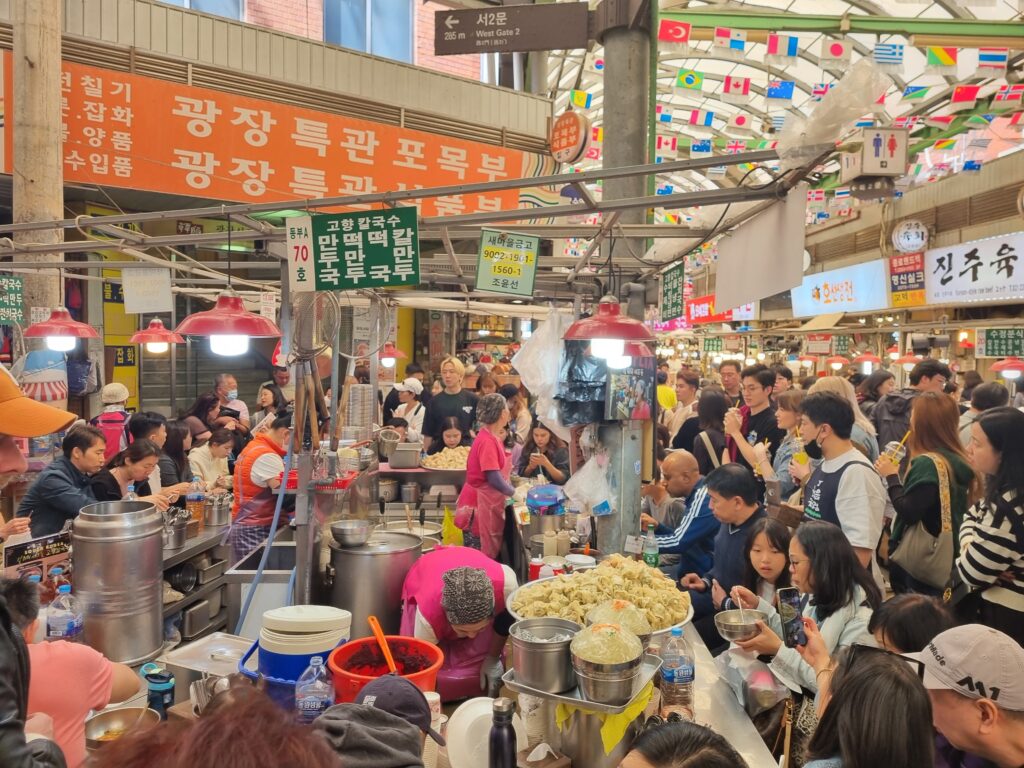
Gwangjang Market is a sensory delight that captures the essence of South Korean street food and culture. With a history dating back to 1905, it’s one of the oldest markets in the city. As you meander through its intricate alleys, you’ll encounter a rich tapestry of sights, sounds, and flavors. Among the must-try dishes you can savor at Gwangjang Market are bindaetteok (mung bean pancakes), tteokbokki (spicy rice cakes), and savory jeon (pan-fried delicacies). In this market, you can discover the stand of the lady chef featured in the Seoul episode of the Netflix series “Street Food: Asia“.
Here’s a fun anecdote: While we were savoring some of the dishes we had chosen for lunch, including some delicious tteokbokki, we couldn’t help but glance around and comment on our neighbors’ plates. This caught the attention of a young Korean couple sitting nearby. Despite not knowing us at all, they noticed our interest in a dish they had ordered but we hadn’t. As a result, they decided to offer us a taste. This is just one of the many instances of exceptional kindness we encountered during our stay.
Design Plaza
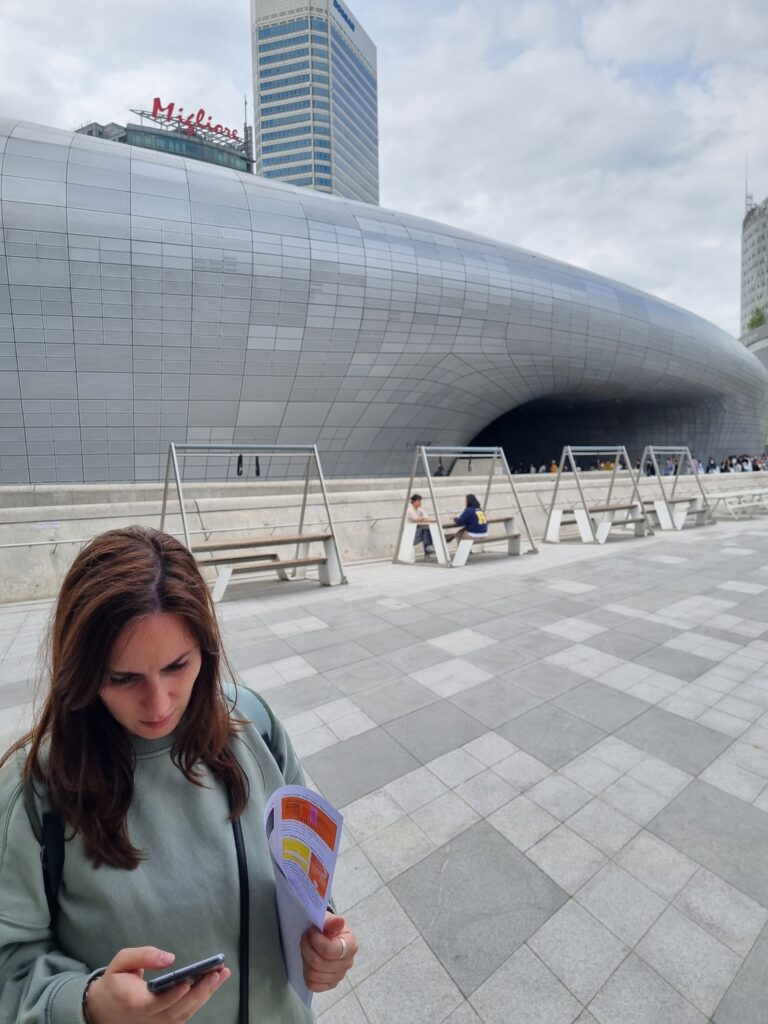
Design Plaza, often referred to as DDP, stands as an architectural masterpiece that embodies South Korea’s innovative spirit. Nestled in the heart of Seoul’s Dongdaemun fashion district, this futuristic and cutting-edge structure was envisioned by the renowned architect Zaha Hadid, the same architect behind one of the three towers in Milan’s City Life district, notably the “twisted” skyscraper (Lo Storto).Inside its walls, it houses a dynamic blend of exhibition spaces, galleries, and design boutiques, making it a hub for creative expression and cultural events.
War Memorial Museum
The War Memorial Museum in Seoul vividly depicts the country’s history deeply marked by numerous wars and invasions throughout its past. The centerpiece of the museum is the outdoor exhibition area, where visitors can wander among real tanks, military aircraft, and even warships, alongside a replica of the famous “Bridge of No Return” from the Korean Demilitarized Zone.
From this somewhat unsettling place, as it’s impossible to forget that you’re strolling amidst war machinery designed for the purpose of taking human lives, a smile can be elicited by children who, by playfully hopping on tanks, visually render them harmless and divert attention from the harrowing years their grandparents must have endured.
Particularly notable in this setting is the profound bond between this country and the United States of America. It’s evident how the USA represents a key ally that first ensured liberation from invaders and then became a steadfast companion and privileged economic partner that propelled the Korean economy to new heights.
Busan
Busan, South Korea’s second-largest city, teems with life as a bustling metropolis along the southeastern coast. Home to over 3.4 million residents, it stands as a testament to the country’s coastal vigor. With a history dating back centuries, Busan’s strategic location has played a pivotal role in international trade and diplomacy. Once known as Geochilsan-do during the Joseon Dynasty, it has transformed into a modern urban hub while retaining its maritime charm. The city’s stunning beaches, vibrant seafood markets, and panoramic vistas from places like Busan Tower showcase its unique character. As a thriving center of commerce and culture, Busan offers a captivating blend of tradition and modernity, making it a must-visit destination for those seeking a taste of South Korea’s coastal heritage.
Haedong Yonggungsa Temple
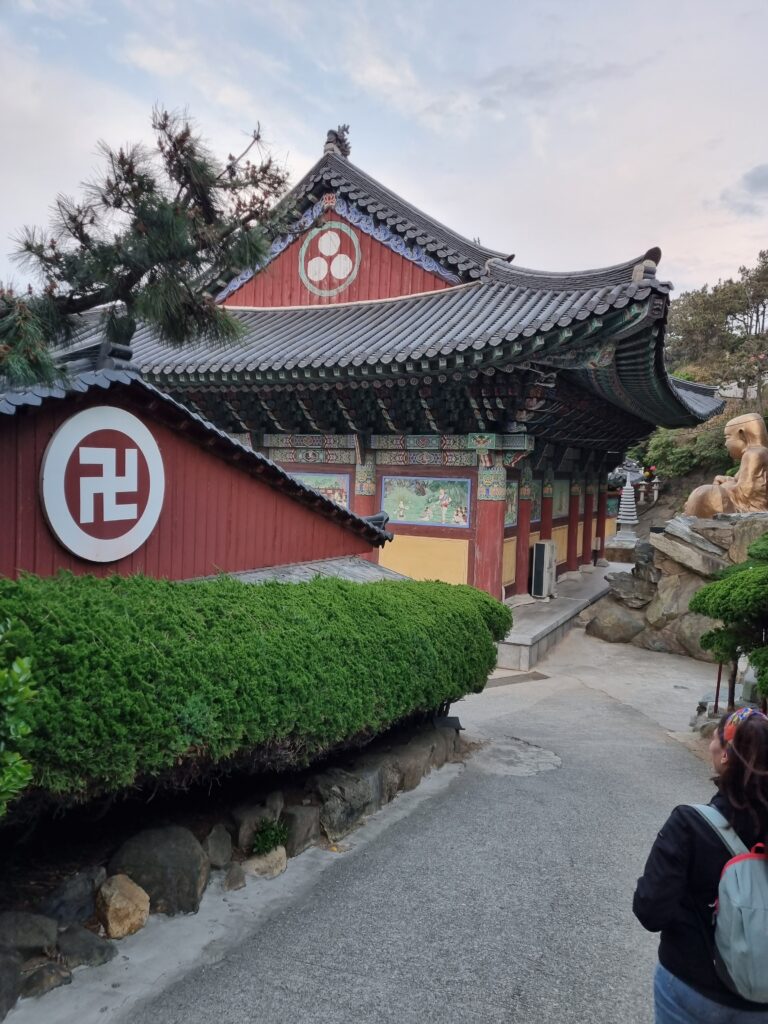
Haedong Yonggungsa Temple is a breathtaking jewel among South Korea’s religious and cultural landmarks. Perched on cliffs that overlook the azure waters of the East Sea, this Buddhist temple is a rarity, as it seamlessly combines stunning coastal scenery with spiritual serenity. Unlike many other temples in the country, Haedong Yonggungsa doesn’t nestle in the mountains but instead embraces the rugged beauty of the coastline.
The temple’s intricate architecture, serene meditation halls, and the soothing sound of crashing waves create an enchanting atmosphere that beckons both spiritual reflection and appreciation for its natural surroundings.
It’s worth noting that in Buddhist culture, the use of the swastika symbol on meditation buildings is common. This symbol should not be confused with the Nazi emblem, as it carries a different meaning within the Buddhist context, signifying auspiciousness and well-being. Clarifying this distinction is important to prevent any misconceptions about Buddhism being associated with fascism.
Haeundae
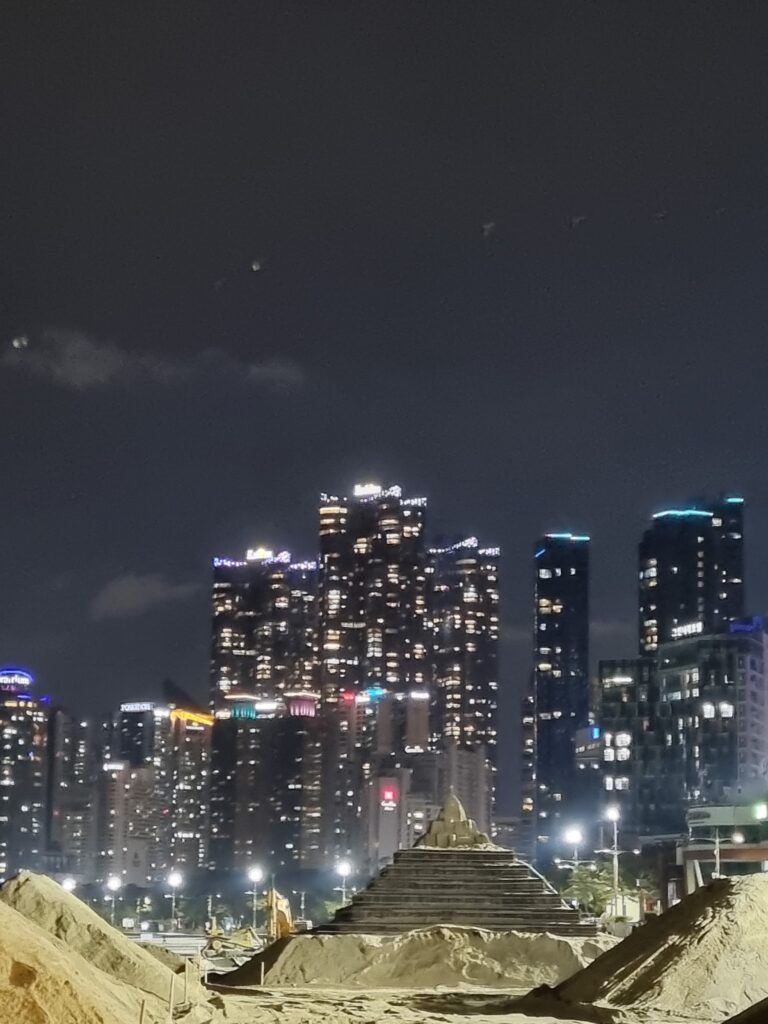
Located on the southeastern coast of South Korea in Busan, Haeundae is a charming coastal district renowned for its stunning beaches and lively atmosphere. With its expansive stretches of golden sand and crystal-clear waters, Haeundae Beach is one of the country’s most popular summer destinations, attracting both locals and tourists alike. In addition to its beautiful coastline, Haeundae offers a vibrant urban landscape filled with luxury resorts, restaurants, shops, and cultural attractions.
It’s the perfect place to seek out a local restaurant and savor some authentic cuisine, followed by a leisurely stroll along the beach to aid digestion.
Gamcheon
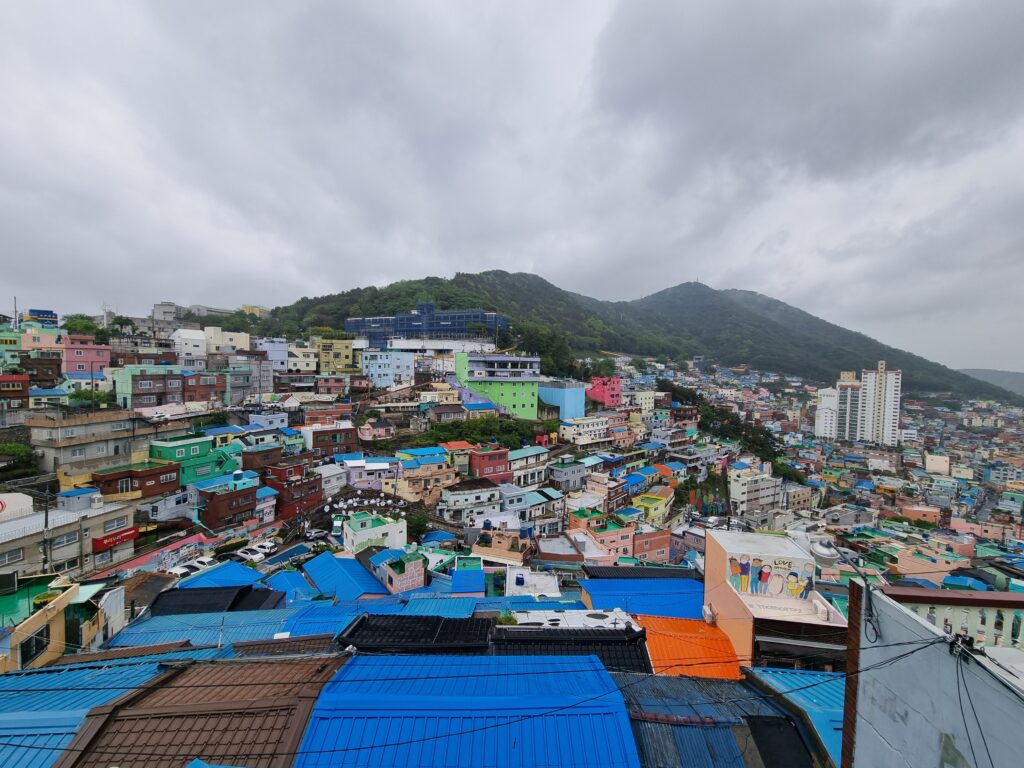
Gamcheon is a small and picturesque village nestled in the hills of Busan. After a long history of poverty and hardship, this vibrant and colorful community has transformed into an art-filled paradise. Its narrow streets are adorned with vibrant murals, sculptures, and artistic installations.
In other words, it’s a wonderful example of revitalization that has allowed a historically impoverished neighborhood to become a destination for many tourists who love getting lost in its narrow alleyways in search of the most beautiful views.
Busan Tower

Busan Tower, perched atop Yongdusan Park in the heart of Busan, offers visitors a spectacular panoramic view of the city’s skyline and the surrounding coastline. Standing at 120 meters tall, this iconic tower has become a symbol of the city’s modernity and progress. Visitors can ascend to the tower’s observation deck by either an elevator or a scenic staircase, where they are rewarded with breathtaking vistas, especially at sunset and when the city lights up after dark. Busan Tower is not only a place for admiring the cityscape but also a hub for cultural experiences, housing an art gallery, a souvenir shop, and a cozy café. It’s a must-visit destination for anyone exploring Busan, providing a memorable perspective on the city’s dynamic blend of urban charm and natural beauty.
Jagalchi Market
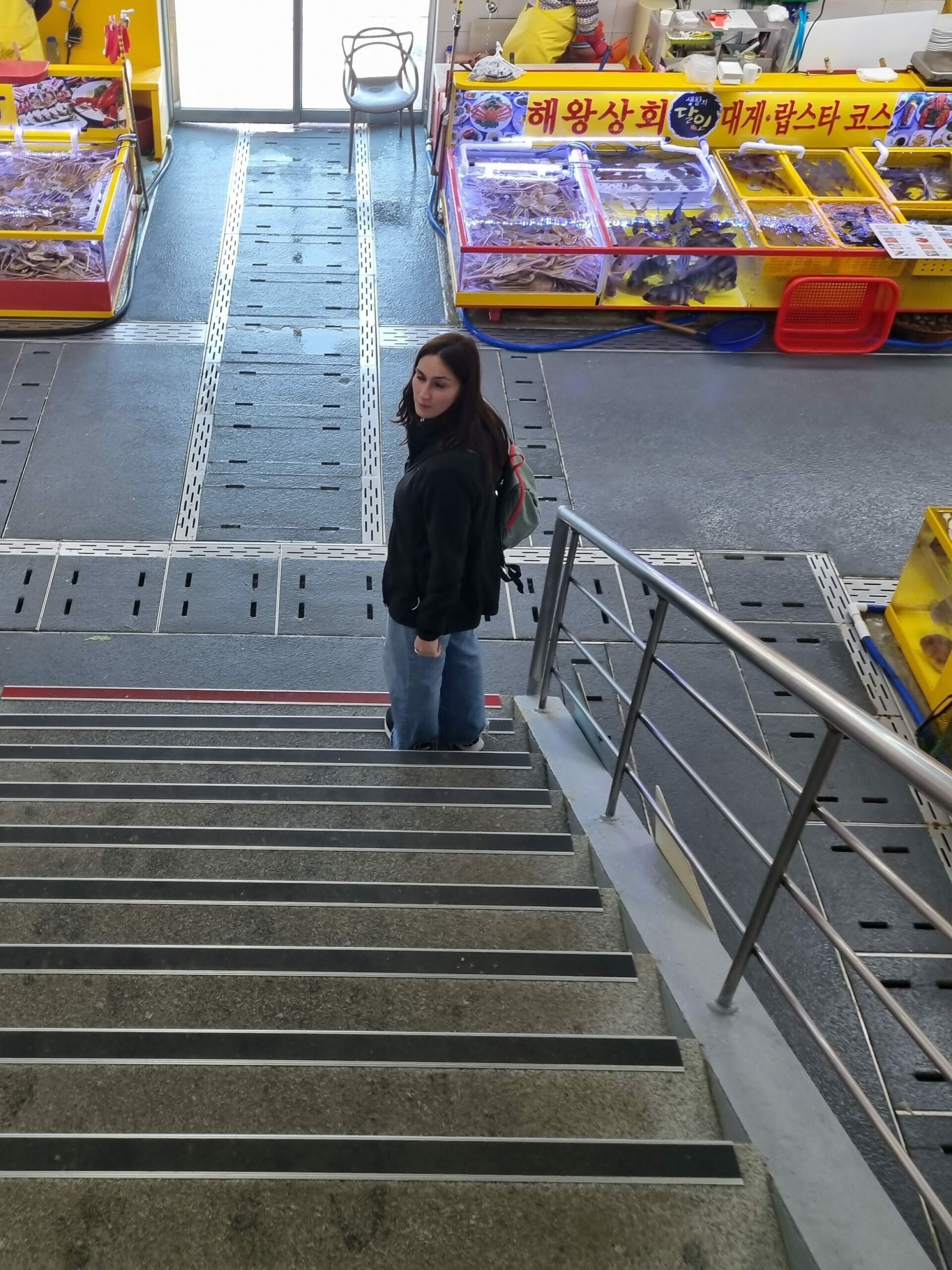
Jagalchi Market, located on the edge of Nampo Port, is a bustling seafood haven and a testament to South Korea’s lively culinary culture. As the country’s largest fish market, it offers a sensory extravaganza where rows of seafood stalls display a stunning variety of marine delicacies, including fish, crustaceans, and exotic deep-sea creatures.
What sets this market apart is its exceptional cleanliness and a widespread sense of hygiene. You won’t catch a whiff of that “fishy smell” that often signals spoiled seafood. Instead, all the stalls showcase live fish, giving the sensation of being in a real aquarium rather than a fish market.
Of course, there’s the opportunity to sample the seafood right on the spot. The more adventurous can have a plate of raw fish prepared by the vendors at the stalls. In our case, we opted for the upstairs dining area where we selected one of the numerous small restaurants and enjoyed some local seafood specialties, expertly cooked to perfection.
Igidae park
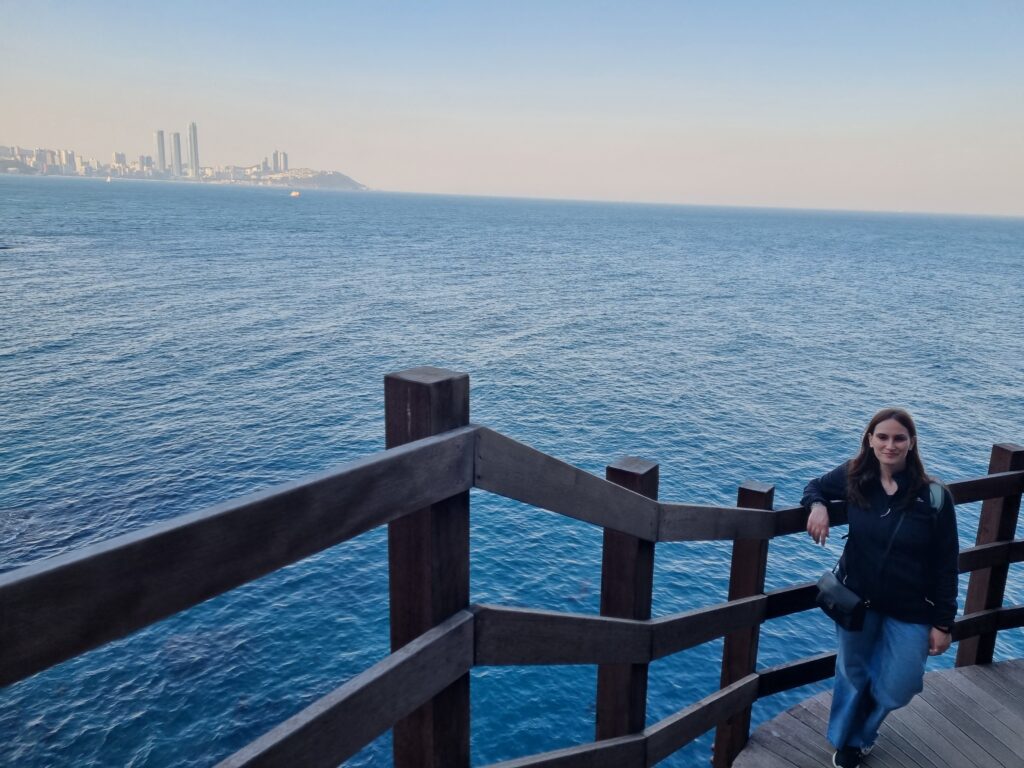
Igidae Park, nestled along the picturesque coastline of Busan, offers a serene escape from the city’s hustle and bustle. This coastal nature reserve is a haven for hikers and nature enthusiasts, with its rugged cliffs, lush greenery, and sweeping views of the sea. The well-maintained hiking trails wind their way through the park, allowing visitors to explore the stunning rocky terrain and enjoy the refreshing sea breeze. Igidae Park also boasts several scenic viewpoints, making it an ideal spot for photography and relaxation.
Gyeongju
Gyeongju, with its rich historical heritage and a population of approximately 260,000, is a captivating city in South Korea’s southeastern region. Often referred to as the “Museum Without Walls,” Gyeongju was once the capital of the ancient Silla Kingdom, which reigned for nearly a thousand years. The city is adorned with countless archaeological treasures, including royal tombs, ancient temples, and historic relics that provide a fascinating glimpse into Korea’s past. Gyeongju’s landscape is characterized by rolling hills and serene countryside, creating a tranquil atmosphere that belies its historical significance.
Yang Dong Village
Yang Dong Village, situated amidst the serene South Korean countryside, stands as a living tableau of the nation’s enduring cultural heritage. This historic hamlet, home to a population of around 150 residents, showcases centuries-old architectural marvels and customs that have stood the test of time. With its charming thatched-roof houses and traditional hanok structures set against a backdrop of rolling hills and lush landscapes, Yang Dong offers an authentic and tranquil journey into South Korea’s past.
Tempio Bluguksa
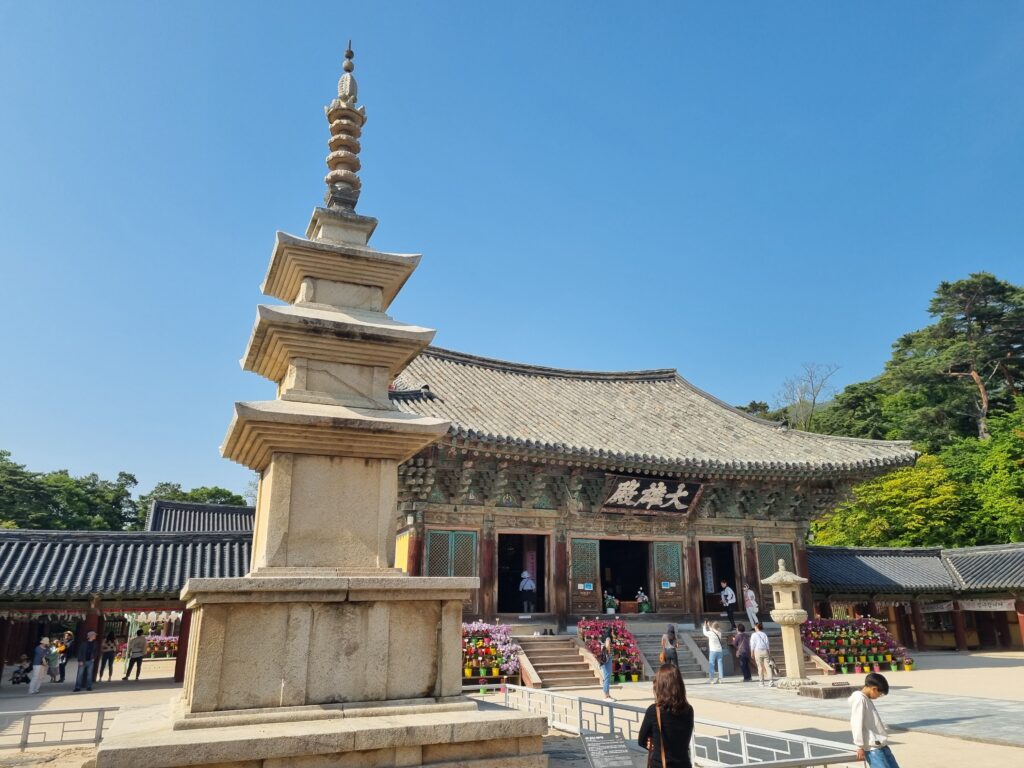
Bulguksa Temple, a revered cultural treasure in South Korea, sits majestically amidst the serene landscapes of Gyeongju. This ancient temple, originally constructed in the eighth century, showcases impeccable architectural craftsmanship and profound spiritual significance. With its meticulously designed pagodas, ornate stone carvings, and tranquil courtyards, Bulguksa is a testament to South Korea’s rich religious history. The temple complex, a UNESCO World Heritage Site, exudes a sense of peace and reverence, making it a revered pilgrimage site for Buddhists and a captivating destination for travelers seeking to explore the profound spiritual and architectural legacy of South Korea.
Cheonmachong
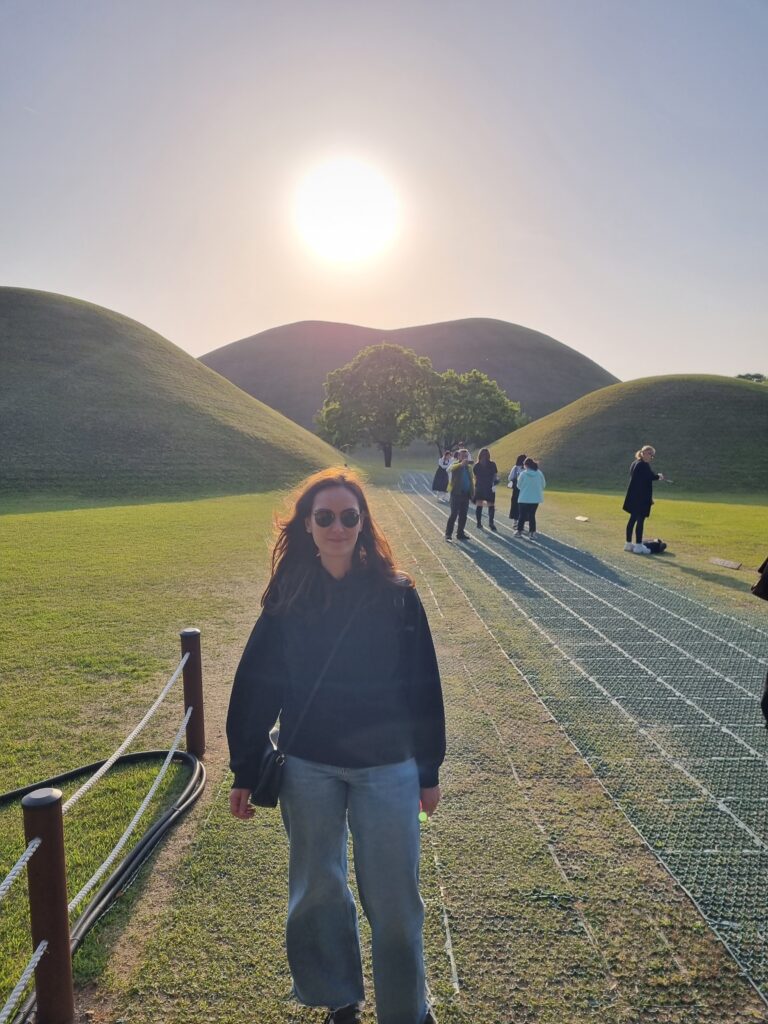
Cheonmachong, a historical marvel located in Gyeongju, South Korea, is an ancient burial mound that holds a wealth of insights into the region’s past. Dating back over a thousand years, this monumental tumulus is known as the “Heavenly Horse Tomb” due to the exquisite horse-themed artifacts discovered within. These remarkable findings shed light on the sophisticated Silla culture that thrived during that era.
Donggung Palace & Wolji Pond
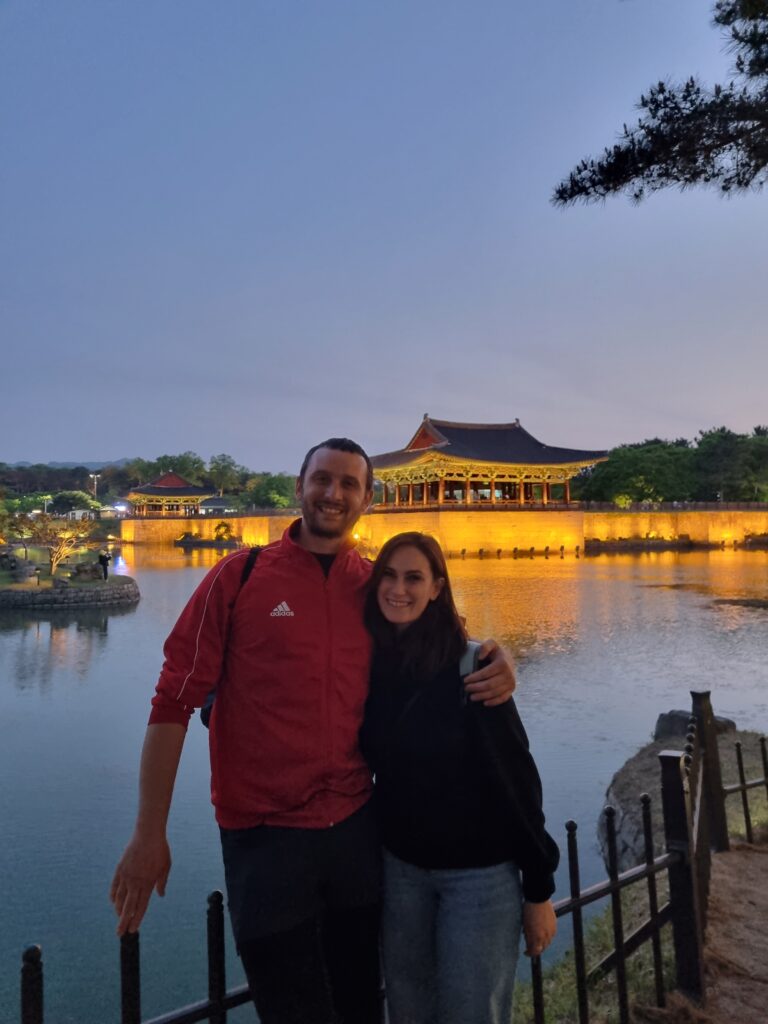
Donggung Palace & Wolji Pond, located in Gyeongju, South Korea, is a historical site of profound cultural significance. Originally built during the Silla Dynasty, this palace and its picturesque pond served as a royal retreat for the ancient rulers. The serene waters of Wolji Pond mirror the surrounding landscape, creating a tranquil atmosphere that is enhanced by the historic pavilions and bridges adorning its shores.
Flavors beyond compare: an exquisite culinary journey
South Korean cuisine is a tantalizing world of flavors and textures that reflects the country’s rich culinary heritage. Renowned for its bold and diverse offerings, South Korean dishes are a delightful fusion of tradition and innovation, resulting in a vibrant and unforgettable dining experience. From fiery and savory dishes to comforting and hearty meals, South Korean cuisine boasts a wide array of options to satisfy every palate. Below, you’ll find a selection of the key dishes we savored on our journey.
- Kimchi: This iconic Korean side dish consists of fermented vegetables, primarily cabbage and radishes, seasoned with a spicy blend of chili, garlic, ginger, and other ingredients. Kimchi is not only a staple but also a symbol of Korean cuisine.
- Tteokbokki: A beloved street food, tteokbokki consists of chewy rice cakes cooked in a spicy gochujang-based sauce, often accompanied by fish cakes and boiled eggs. It’s a flavorful and comforting snack or meal.
- Bibimbap: A colorful and nutritious rice dish topped with an assortment of vegetables, meat (often beef), and a spicy gochujang sauce, bibimbap is mixed together before eating, creating a harmonious blend of flavors and textures.
- Galbi: Succulent beef or pork ribs are marinated in a savory-sweet sauce and grilled to smoky perfection. Galbi is a popular choice for Korean barbecue and is often enjoyed with an assortment of banchan (side dishes).
- Bulgogi: Thinly sliced marinated beef or pork is grilled to perfection, resulting in tender, sweet, and savory meat. Bulgogi is often served with lettuce leaves for wrapping, along with various condiments.
- Japchae: A stir-fried noodle dish made from sweet potato starch noodles, Japchae features a colorful mix of vegetables, meat (usually beef), and soy sauce. It’s known for its delightful chewy texture and balanced flavors.
- Samgyeopsal: Thick slices of pork belly are grilled at the table and typically wrapped in lettuce leaves with garlic, ssamjang (spicy dipping sauce), and various accompaniments, allowing for a customizable and interactive dining experience.
One striking aspect you’ll undoubtedly notice in Korean restaurants is that the table is often not set with utensils; chopsticks, spoons, and napkins are typically available in ample quantities in a side drawer of the table. However, even though most eating utensils can be found in this drawer, waitstaff often go the extra mile by offering a pair of large scissors, a common tool during meals in Korean restaurants.
Despite an initial phase in which we were puzzled about how to use such an implement, fellow diners eventually explained that the scissors are handy for cutting noodles or meat. It may seem unusual to Italians, but as the saying goes, “When in Rome, do as the Romans do.”
